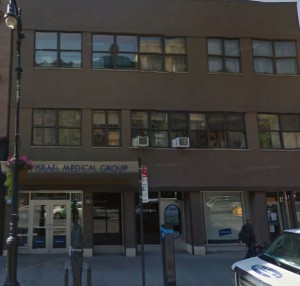Happy Birthday Lee Krasner!
Influential American abstract expressionist painter Lee (Lenore) Krasner, was born on October 27, 1908 to Russian Jewish immigrant parents in Brooklyn, New York. After graduating from high school, where she spent three years majoring in studio art, Krasner was awarded a scholarship and attended the Women’s Art School of Cooper Union and later studied at the National Academy of Design. While earning her teaching degree in art and continuing to paint, Krasner supported herself by waitressing at a cafe in Greenwich Village. It was in the Village where she also met came to know, and was influenced by avant-garde artists and critics.

In 1934 the Public Works of Art Project of the Works Progress Administration (WPA) hired Krasner to paint murals. She worked on and off for the WPA until 1943 when the agency dissolved. While working for the WPA, Krasner also studied under German artist Hans Hofmann at 52 West 8th Street, in a single large room above the 8th Street Playhouse. Conveniently, at this time, she lived just a block to the north at 51 East 9th Street. Through her exposure to Hofmann’s modernist methods, her formerly naturalist paintings and drawings transformed into a mature Cubist style. She also joined the American Abstract Artists, a democratic artist-run organization founded in 1936 in New York City to promote and foster understanding of abstract and non-objective art, which provided more opportunities to exhibit her work as a flourishing young modernist painter.


Though they met years earlier, in 1941, Krasner and Jackson Pollock fell in love. They married in 1945 and then moved from the Village to East Hampton, New York. They greatly influenced one another’s art, and after marrying Pollock, Krasner began rejecting the neo-cubist style she adapted while working under Hofmann. During her marriage, Krasner developed her Little Image paintings. Thickly painted with abstract symbols, these works are today considered among her most significant contributions to Abstract Expressionism.
Kransner is well known for what she referred to as “breaks,” periods in which she revised her aesthetic many times throughout her artistic career. These transformative periods led to her bold collages of the 1950s and then her large brilliantly colored canvases of the 1960s. These breaks allowed her to continue to express herself more fully and were often influenced by what was going on in her life.

For instance, though she started her Earth Green Series prior to Pollock’s death, the paintings increasingly reflected her feelings of anger, guilt, pain and loss, which she felt both before his death (during his tumultuous battle with alcoholism) as well as after he died in a 1955 car crash. Krasner expresses her grief by using blood-red accents in the figures suggesting wounds. The paint drips on the canvas show her speed and willingness to relinquish absolute control, both necessary for portraying her emotions. During the 1960s and 70s, postmodern art influenced Krasner’s art.
While Krasner died in 1984 from natural causes, she left an important mark upon the canon of twentieth century American Art. She is one of only a handful of women artists to have had a retrospective show at the Museum of Modern Art and expertly embodied the eclectic nature of Greenwich Village artists prevalent during the post-war period.

One response to “Happy Birthday Lee Krasner!”